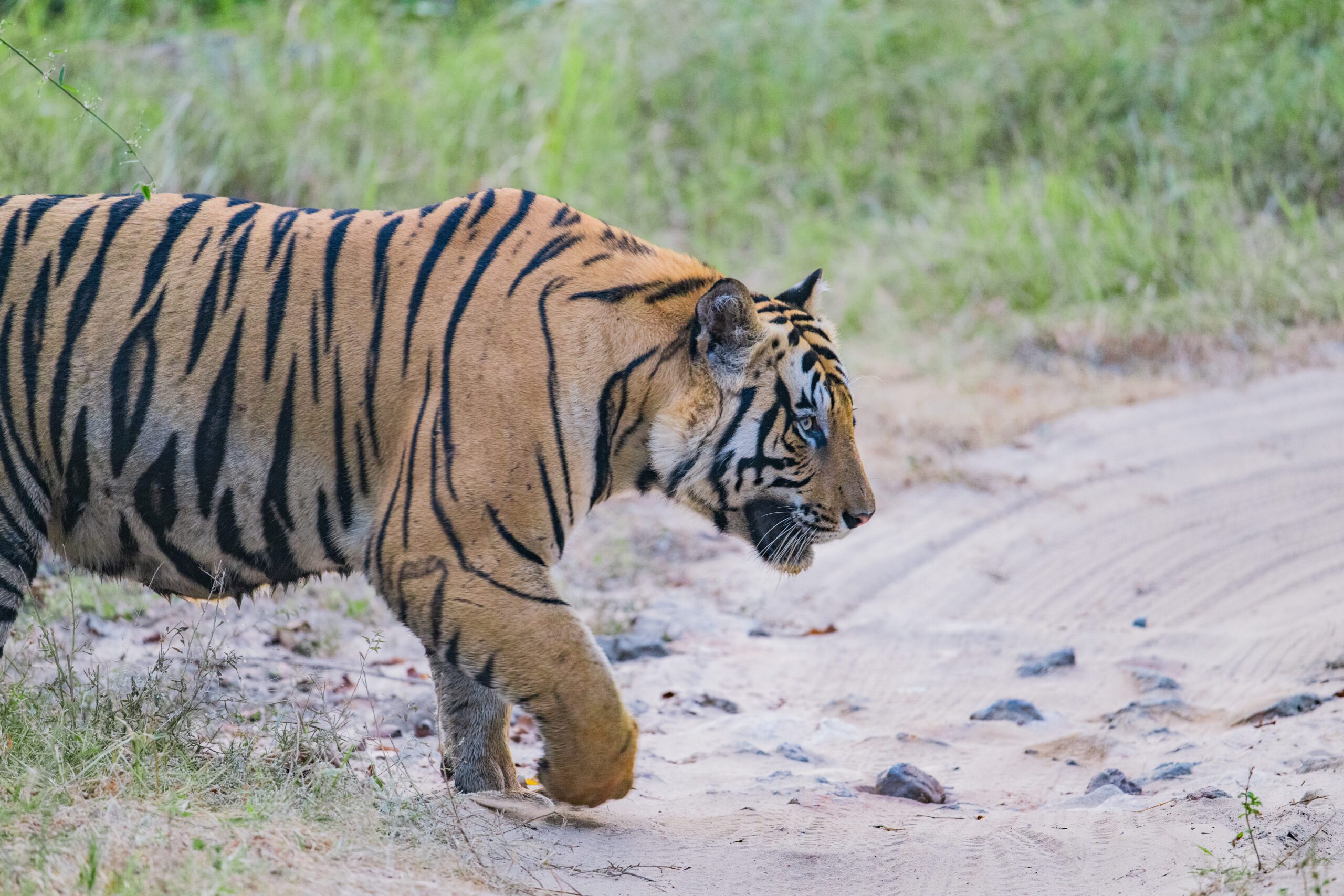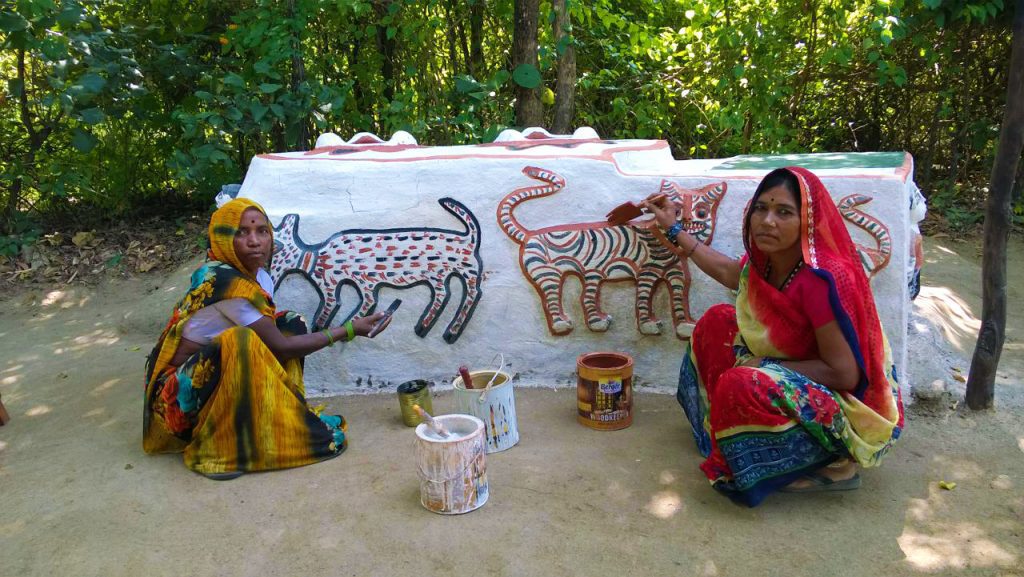“A tiger is a large-hearted gentleman with boundless courage and that when he is exterminated – as exterminated he will be unless public opinion rallies to his support – India will be the poorer by having lost the finest of her fauna”
Jim Corbett (Man-eaters of Kumaon 1944)
The tiger is an embodiment of strength, awe, fear and majesty. It is an integral part of Indian ethos and finds a place in our mythology, legend, folklore and poetry. This charismatic big cat symbolizes our wilderness.
Need Of Project Tiger
Tiger is one of the key wildlife species in the faunal web. In 1973, government authorities realised that the tiger population had dwindled to 1,827, from an estimated 55,000 at the turn of the century.

The major threat to tiger population include poaching for trade, shrinking habitat, depletion of prey based species, growing human population and deforestation.
Project Tiger is a tiger conservation programme launched on 1 April, 1973 by the Government of India.

The project aims at ensuring a viable population of Bengal tigers in their natural habitats, protecting them from extinction, and preserving areas of biological importance as a natural heritage, forever representing as close as possible, the diversity of ecosystems across the tiger’s distribution in the country. Since then, the project coverage has expanded to 51 reserves, spread out in 18 tiger states, from the initial 9 reserves. When you go on a tiger safari in India, you can see many Bengal tigers, especially in the Maharashtra jungles.
Evolution Of Tiger
Miacids are a common relative for all felines and dogs. They were forest and tree dwellers, and had a specialized vertebrae that allowed them to do so. This vertebrae most likely lead to there survival, since they were around for about 30 million years (estimated). This type of vertebrae was unique for the time period and set the ground stones for all future felines.

The Tiger’s biological name is Panthera tigris. Panthera is a sub-family of cats. The tiger family tree started with an ancient carnivore called the miacid, which lived 62 million years ago (MYA). Despite how long ago the miacid was alive, the tiger and miacid share lots of things in common.
For example the miacid had patterned fur, a tail, and lived in the jungle, feeding only on meat. It evolved into the tiger’s Field ancestor, 10.8 MYA, during the middle Miocene era. Then that evolved into the tigers panthera ancestor, 6.4 MYA. Finally the modern tiger branched off with the snow leopards in the Pliocene era, which was only 3.2 MYA.
Facts About Project Tiger

- Project Tiger was first initiated in the year April 1, 1973, and is ongoing.
- The much-needed project was launched in Jim Corbett National Park, Uttrakhand under the leadership of Indira Gandhi.
- There are around fifty-one parks and sanctuaries that are involved in this project.
- Around the 1970s the tiger count was only one thousand and two hundred, but according to the recent census, it has increased to three thousand. In fact, there has been a thirty per cent rise in the population in the last eight years.
- Project Tiger was administered by the National Tiger Conservation Authority (NTCA).
- NTCA was established in December 2005, following a recommendation of the Tiger Task Force, constituted by the Prime Minister of India for reorganised management of Project Tiger and the many Tiger Reserves in India.

Issues and Challenges in Tiger Conservation
- Tiger death due to Man-Animal Conflicts.
- Tiger death due to poaching.
- Lack of adequate protection in outside tiger reserve.
- Loss of forest quality in terms of prey biomass.
- Insurgency/ law and order problems.
- Lack of wildlife corridors and connectivity.
This year, Union Environment Minister, Prakash Javadekar released the All India Tiger Estimation Report and lauded the success story of Project Tiger. Notably, the project started in 1973 with just 9 tiger reserves covering 18,278 sq km in 9 states but today, there are 50 tiger reserves spread over an area of 72,749 sq km in 18 tiger range states.
Project Tiger has been Instrumental in Protecting Other Wildlife Species
After seeing the success of Project Tiger, the government updated the Wildlife Protection Act of 1972. This ensured that along with tigers other wildlife also get protected.
Slowly but surely, most national parks took the initiative of saving the endangered species as well, for example; the One Hone Rhino at Kaziranga, Assam, the Lion at Gir, Gujarat.
The success of Project Tiger has been a driving force to protect many other endangered species, as well as in protecting other wildlife species. Immense awareness has been created in the minds of people as well, and protecting wildlife has become a key driver.
It is also heartening to see how Project Tiger has been instrumental in providing employment to so many individuals.
References: http://www.arcgis.com/
Written By: Mohan Chandra Joshi, Naturalist at Kings Lodge, Bandhavgarh
Edited by: Natasha Sinha, Content Curator, Pugdundee Safaris
Contact us for bespoke safari experiences.
Email : [email protected] [email protected] Call : +91-11-4013 6332.
Kanha Earth Lodge – Kanha | Pench Tree Lodge – Pench
Kings Lodge & Tree House Hideaway – Bandhavgarh
Ken River Lodge – Panna | Denwa Backwater Escape – Satpura
Evolution of Tigers | Tiger Evolution
6 Ways of Tracking Tigers | Tracking Tigers In India



